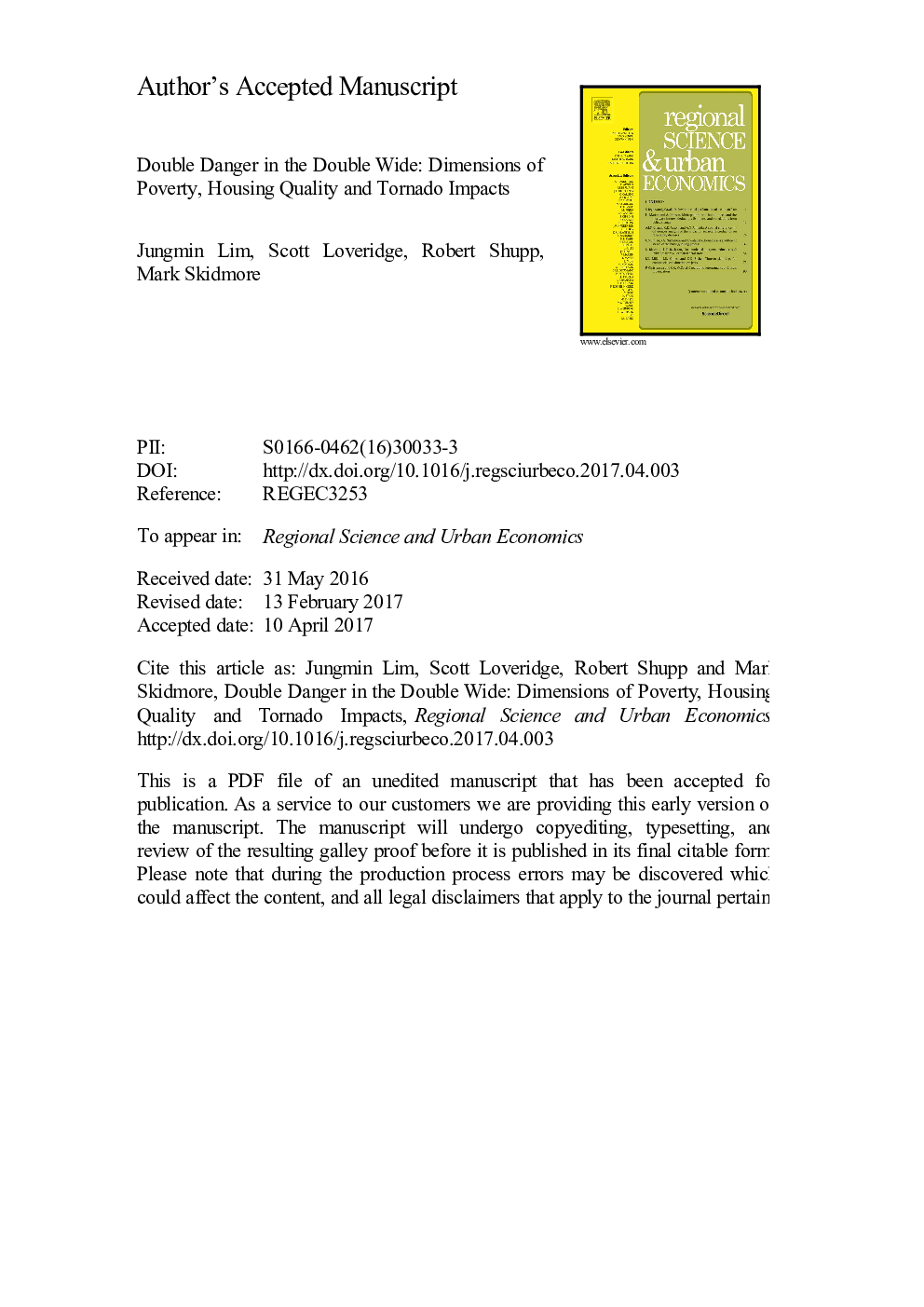| Article ID | Journal | Published Year | Pages | File Type |
|---|---|---|---|---|
| 5103684 | Regional Science and Urban Economics | 2017 | 44 Pages |
Abstract
Tornadoes are the most frequent of the natural hazards in the United States, causing significant yearly human and economic losses. Given the potential destructive power of tornado events and their largely unpredictable nature, it is important to identify the major determinants of vulnerability. To date, only a limited number of studies have empirically investigated the determinants of tornado-induced deaths. Based on a conceptual framework where risk is considered to be a function of physically defined natural hazards and socially constructed vulnerability, we extend previous empirical studies by examining a wider range of potential socio-economic, governmental, and housing factors that determine tornado-induced fatalities. Using detailed county-level data for years 1980-2014, we find that counties with higher per capita income and per capita government spending on public safety and welfare have fewer deaths, whereas counties with greater income disparity are more vulnerable to tornadoes. We explore which aspects of poverty seem most associated with fatalities. Housing quality (measured by mobile homes as a proportion of housing units) is a critical factor in explaining tornado-induced fatalities.
Related Topics
Social Sciences and Humanities
Economics, Econometrics and Finance
Economics and Econometrics
Authors
Jungmin Lim, Scott Loveridge, Robert Shupp, Mark Skidmore,
